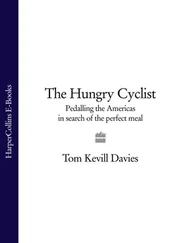6 6. Jonathan Portes, The Coalition’s confidence trick. The New Statesman, 2011.
7 7. Gordon Brown, My Life, Our Times. Bodley Head, 2017, p. 350.
8 8. Howard Davies, The Financial Crisis: Who’s to Blame? Polity, 2010.
9 9. Jonathan Cribb and Paul Johnson, 10 years on: Have we recovered from the financial crisis? Institute for Fiscal Studies, 12 September 2018. https://ifs.org.uk/publications/13302.
10 10. Ibid.
11 11. Benjamin Nabarro and Christian Schulz, Recent trends to the UK economy. IFS Green Budget, October 2019. https://ifs.org.uk/uploads/GB2019-Chapter-2-Recent-trends-to-the-UK-economy.pdf.
12 12. Jonathan Portes, ed., The economic record of the Coalition government. National Institute Economic Review 231, February 2015. https://www.cambridge.org/core/journals/national-institute-economic-review/article/abs/economic-record-of-the-coalition-government-introduction/8015174E2D750BB262797CB54D544413.
13 13. Jennifer Castle, David Hendry and Andrew Martinez, The paradox of stagnant real wages yet rising ‘living standards’ in the UK. VoxEU, 21 January 2020. https://voxeu.org/article/paradox-stagnant-real-wages-yet-rising-living-standards-uk.
14 14. Paul Krugman, The Age of Diminished Expectations: US Economic Policy in the 1990s, 3rd edn. MIT Press, 1997, p. 11.
15 15. Martin Wolf, Why once successful countries like the UK get left behind. Financial Times, 21 February 2021.
16 16. Nabarro and Schulz, Recent trends to the UK economy, p. 66.
17 17. David Sainsbury, Windows of Opportunity: How Nations Create Wealth. Profile Books, 2021.
18 18. Abigail Haddow, Chris Hare, John Hooley and Tamarah Shakir, Macroeconomic uncertainty: What is it, how can we measure it and why does it matter? Bank of England Quarterly Bulletin, 2013 Q2. https://www.bankofengland.co.uk/quarterly-bulletin/2013/q2/macroeconomic-uncertainty-what-is-it-how-can-we-measure-it-and-why-does-it-matter.
19 19. Impact of the Brexit trade agreement on our economy forecast. Office for Budget Responsibility, 3 March 2021.
20 20. Torsten Bell et al., The UK’s decisive decade. The launch report of ‘The Economy 2030 Inquiry’. Resolution Foundation. May 2021. https://economy2030.resolutionfoundation.org/reports/the-uks-decisive-decade/.
21 21. Sascha Becker, Peter Egger and Maximilian von Ehrlich, Absorptive capacity and the growth and investment effects of regional transfers: A regression discontinuity design with heterogeneous treatment effects. American Economic Journal: Economic Policy 5/4, November 2013, pp. 29–77.
22 22. Diane Coyle, Sam Warner, Dave Richards and Martin Smith, Budget ditches industrial strategy for centralised levelling up. Bennett Institute for Public Policy, 10 March 2021. https://www.bennettinstitute.cam.ac.uk/blog/budget-ditches-industrial-strategy-centralised-lev/.
23 23. Bell et al., The UK’s Decisive Decade.
24 24. Gregory Claeys, Zsolt Darvas, Maria Demertzis and Guntram Wolff, The great COVID-19 divergence: Managing a sustainable recovery in the European Union. Policy Contribution 11 2021, Bruegel. https://www.bruegel.org/wp-content/uploads/2021/05/PC-2021-11-ecofin-210521-1.pdf.
Bank of England independence in May 1997 changed the role of both the Treasury and the Chancellor in macroeconomic policy. In the dying days of the long Conservative regime which began in 1979, a hybrid monetary policy-making model had been constructed, in which the Bank of England gave its interest rate advice to the Chancellor, and could publish it, but the Chancellor made the ultimate decision. The so-called Ken and Eddie show (Chancellor Ken Clarke and Governor Eddie George) ran monthly from June 1993 to May 1997. No other country has operated such a hybrid model. For two years, I chaired the internal Bank committee which prepared the draft advice, and attended the meetings. They were civilized encounters but sometimes with an element of Whitehall farce. On occasions, faced with a carefully crafted letter, representing thousands of hours of work by the Bank’s economists leading to a considered recommendation of a quarter point rise (sometimes accompanied by internal Treasury advice saying the same thing), Ken Clarke would open the meeting by saying cheerily: ‘Well there’s obviously no chance of a rise this month.’ He then asked for our views, but only on how long we needed to stay before the Bank team drove out of the Treasury courtyard. Too short a stay, and the waiting press would say our advice had been dismissed without discussion. Too long a stay, and the story would be that there had been a row between the two teams.
That vaudeville act was swept away in 1997, to be replaced by a model of central bank independence worked up in opposition by Brown and Balls, with help from some US policymakers, including Alan Greenspan, and a few Bank and Treasury moles. The model, which was implemented almost exactly as they drafted it, differed from both the US Federal Reserve System (the Fed) and the European Central Bank (ECB) and also from the Reserve Bank of New Zealand, which had been the first to implement an inflation target regime eight years earlier. The architects were sensitive to the complex history of the Bank–Treasury relationship. The Treasury was fearful that the Bank would be overzealous in its pursuit of low inflation, that it had a strong, enclosed, internal culture generating powerful ‘groupthink’ and that it was too hierarchical, with all decision-making roads leading to the Governor’s office. These points were made to me forcefully when the Treasury appointed me Deputy Governor in 1995. There was much truth in that assessment, I discovered.
So unlike the Fed and the ECB, which were left to themselves to define what they meant by price stability, the Bank of England was to operate under an inflation target regime, with the target set by the Treasury. That amounted to instrument independence – the Bank had full control over short-term interest rates – but not target independence. Most independent central banks in other developed countries have the latter as well as the former. The Treasury could change the target if it wished, and indeed has once done so.
The new Bank of England model is distinctive in other ways too. Unlike the Fed, which has a parallel objective of maintaining full employment, the Bank’s objectives are hierarchical. Meeting the inflation target is the prime aim, and only subject to that should it contribute to the government’s other economic objectives. In that respect it is similar to the ECB. Brown recalls that his initial thinking favoured a model more closely aligned to the Fed, with an employment objective: ‘The early papers we put to the Treasury had that idea included. But we could not find a legislative way of implementing a dual target. It involved revising Acts going back hundreds of years.’ 1But while the new Bank is similar to the Fed and the ECB in some ways, it departs from both the other main models in having four part-time outsiders appointed to its Monetary Policy Committee (MPC). That was specifically targeted at the groupthink point. Their power is buttressed by a requirement to publish individual votes of MPC members after every meeting. The Fed publishes ‘dissents’, while the ECB does not produce a voting record. The latter argues that to do so would put intolerable pressure on the voting members from national central banks, which would be expected by their governments to vote according to the circumstances of the economy of their country, rather than the Eurozone as a whole.
The UK model has been criticized by other central bankers for its excess of transparency. The publication of individual votes creates pressure on members to justify their views outside the meeting. The number of monetary policy speeches emanating from the Bank has escalated dramatically, as each member of the MPC tries to explain and defend their policy positions. That has generated a lot of ‘noise’ in the system. If monetary policy works through influencing expectations, it is not clear that these conflicting views help. The markets can become confused and on occasion the Governor has found himself in a minority, obliged to defend a position which is not his own.
Читать дальше









